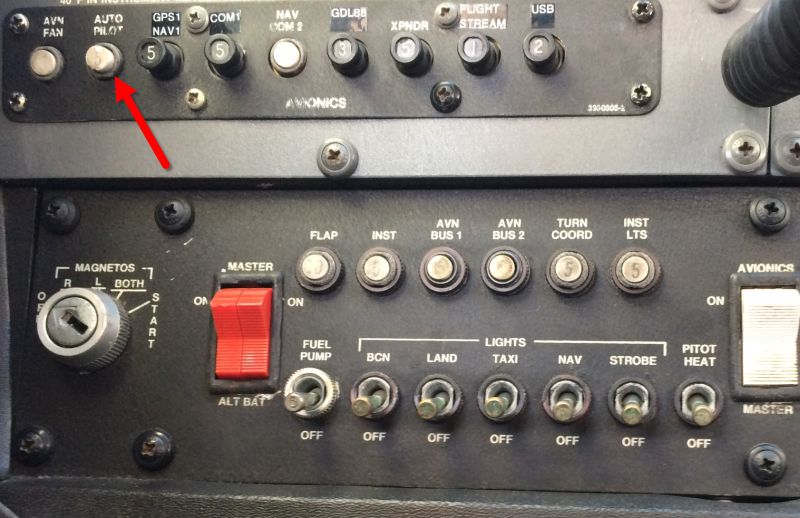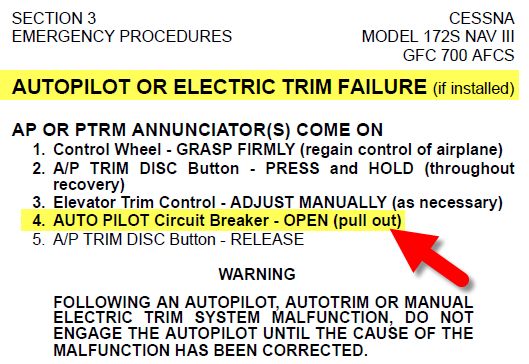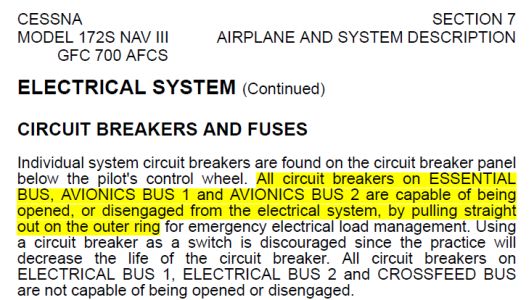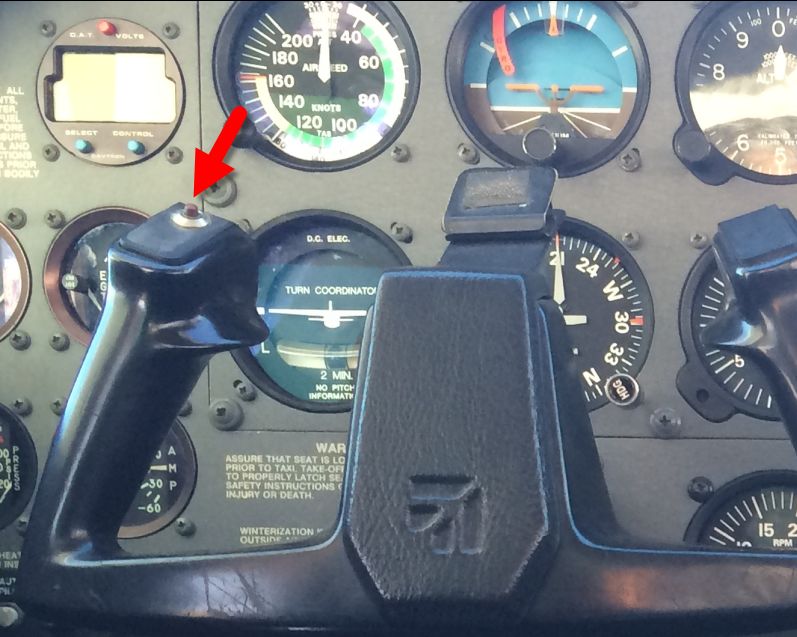Thanks all! Here a few responses, some additional info from the POH, and another dumb question.
Circuit Breaker and Fuse are protection for wiring not a on off switch.
WRONG. Not for an autopilot.
If it misbehaves, you want this to be able to completely disable it in flight. Microswitches can fail, and a stuck on autopilot is a landing hazard.
Having had a GFC700 glitch and command full nose down trim, the circuit breaker is a nice alternative to turning the master off.
To the OP, you're not missing something. It may or may not be required by reg, but you sure as heck want the capability. And that CB looks like hell. It's a KAP140, right?
It is a KAP 140, the single axis version which evidently means roll (wing leveler) or heading, but not altitude.
In the other thread about the pilot that lost control of his aircraft while fighting a malfunctioning autopilot, pulling the circuit breaker was one of the suggested ways of disabling it.
I’m becoming familiar with a new plane, for me, and figured I should fully understand it.
In the photo above, the black circuit breakers look "pullable" and the white ones look "resettable."
I just looked, and the 172S POH specifically says that you should be able to “pull out” the circuit breaker. It doesn’t look to me like the autopilot's white circuit breaker is very "pullable":
I’m still confused about the autopilot fuse that I’m seeing because the electrical system description also says that the fuses should be “pullable” and not merely resettable:
I don’t think that it’s the case, but maybe the “ring” normally used for pulling has broken off?
Off topic, but... you have both a FlightStream and a GDL88 in that C172? Nicely equipped!
Thanks for that observation! I flew this plane for the first time about a week ago and was surprised to be getting traffic alerts on the Garmin 530. Now I know why.
It sounds like the Flight Stream 210 will wirelessly link the Garmin 530 with my iPad, using Foreflight (I already have a Pro+SynVis subscription) or Garmin Pilot (just downloaded a 30-day trial). Supposedly you can see weather, see traffic, power the synthetic vision, and transfer flight plans back and forth. Can’t wait to try it!
Look on the backside of the yoke. There's a separate (small) pullable CB for the AP.
Will do. Thank you.
Is this button on the left yoke the “AP TRIM DISC” button mentioned above? The push-to-talk (PTT) button is on the back side of the same handle.







 Most of the ones I ever worked in.
Most of the ones I ever worked in.